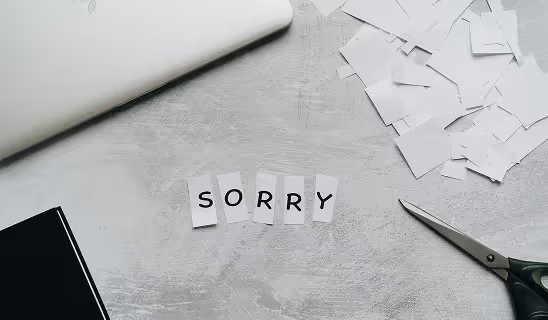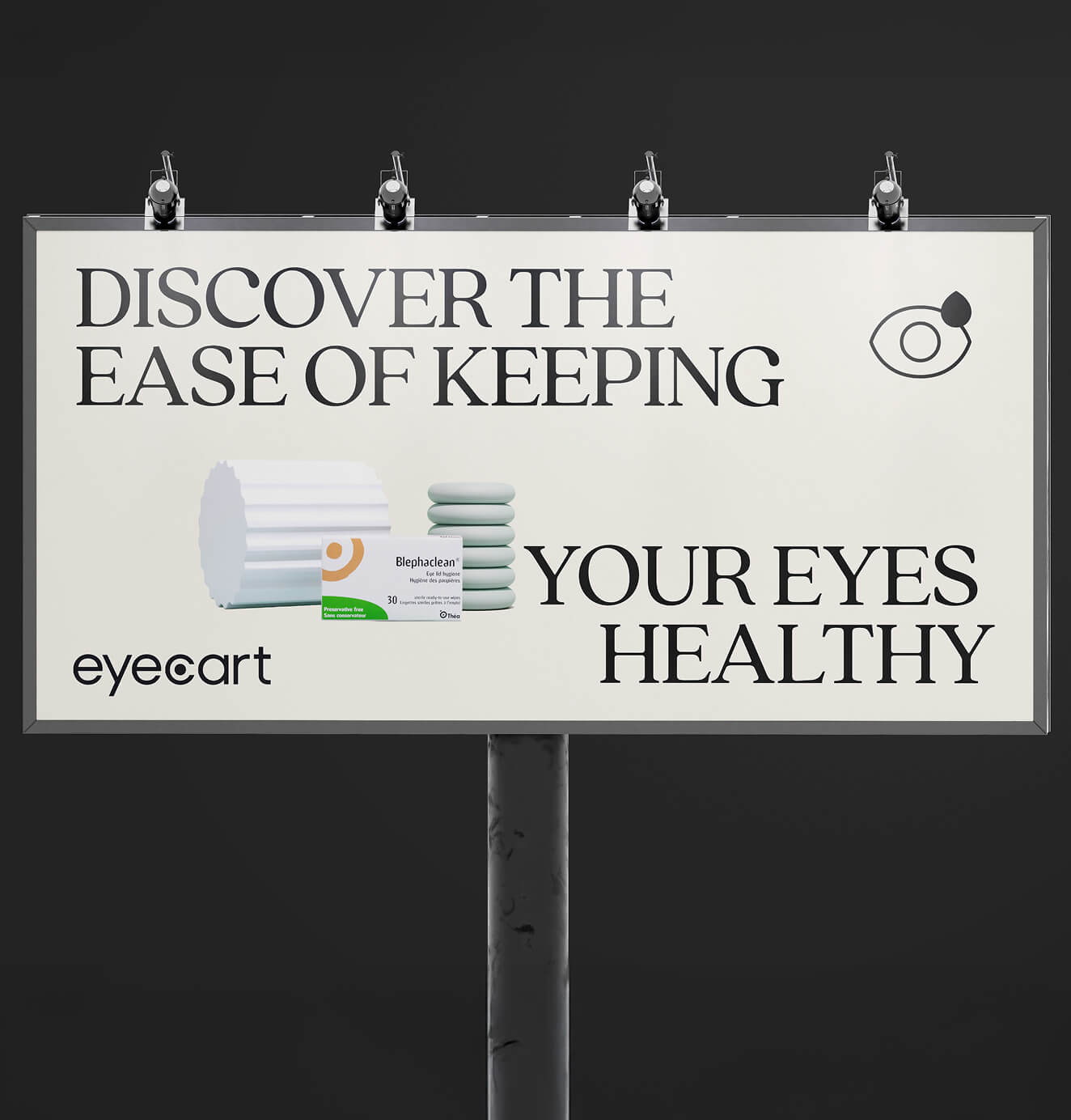When the Sh*t Hits the Fan: The Unvarnished Truth About Crisis Management for Brands
02/27/2025
Business
When a crisis strikes, how a brand reacts can make or break its reputation—this no-nonsense guide dives into the realities of crisis management and how to navigate the storm.

Let's cut to the chase: if you think your brand is immune to a crisis, you're living in a fantasy world. In the real world, where the rest of us live, a staggering 95% of business leaders are waking up to the cold, hard fact that their crisis management game is about as strong as a wet paper bag. According to the brainiacs over at HubSpot, these leaders are practically screaming for an upgrade in their crisis-handling skills. Source: HubSpot And guess what? If you're playing in the big leagues of business, there's a more than 90% chance that you're going to face a brand crisis that could hit you harder than a Monday morning hangover. That's not us being dramatic; that's just the numbers talking, straight from the data-driven gurus at Ramotion Agency. Source: Ramotion Agency But here's the kicker: while more than half of businesses watch their reputation and customer trust nosedive faster than a lead balloon post-crisis, a jaw-dropping 49% of U.S. companies are strutting around without a crisis communication plan. That's right, folks – according to Forbes, nearly half of the corporate world is basically crossing their fingers and hoping for the best. Source: Forbes, Source: MarketSplash So, buckle up, dear reader. We're about to dive headfirst into the chaotic, unpredictable, and utterly thrilling world of crisis management. We'll show you how to not just survive, but thrive when the inevitable hits, and how to do it with the style and swagger your brand deserves. Welcome to the no-BS zone of protecting your brand's reputation. Let's get this show on the road.
.png)


The Brutal Reality of a PR Crisis



What the Hell is a PR Crisis, Anyway?
Picture this: You're cruising along, business as usual, and then - BAM! - out of nowhere, your brand is the star of its very own horror show. A PR crisis isn't just a bad review or a snarky tweet; it's a full-blown, red-alert situation where your brand's reputation is hanging by a thread. We're talking scandals, data breaches, controversial statements - the kind of stuff that makes your PR team break out in cold sweats.
The Usual Suspects: What Sparks a PR Inferno
So, what lights the fuse?
It could be anything from a CEO's foot-in-mouth moment to a product that backfires spectacularly. Maybe it's an ad campaign that missed the mark so badly it's not even on the same planet. Or perhaps it's something more sinister, like a data breach that leaves your customers' info hanging out in the wind. The point is, crises come in all shapes and sizes, but they all have one thing in common: they're bad news for your brand.
The Grim Stats: A Look at the Carnage
Let's lay it out in black and white.
Over half the businesses out there take a nosedive in reputation and trust after a crisis. Think about that. More than 50% are watching their hard-earned rep go down the drain because they weren't ready to handle the heat. And with less than half of U.S. companies rocking a formal crisis plan, according to Forbes, it's like watching a train wreck in slow motion. Source: MarketSplash, Source: Forbes
The Bottom Line
A PR crisis is not a matter of "if" but "when." And when it hits, it hits hard. But don't just take our word for it. The numbers speak for themselves, and they're not whispering sweet nothings. They're screaming, "Get your act together before it's too late!"
So, let's roll up our sleeves and get down to the nitty-gritty of how to keep your brand from becoming just another cautionary tale.
Armoring Up Before the Storm
Crafting Your Crisis Battle Plan
Listen up, because this is where the rubber meets the road. You wouldn't jump out of a plane without a parachute, right? So why would you run a brand without a crisis management plan? It's not just a fancy document to show off at board meetings; it's your brand's lifeline when the going gets tough.
Step 1: Assemble Your A-Team
First things first, you need a squad. Not just any group of suits, but a team of quick-thinking, cool-under-pressure types who can handle whatever hellfire comes your way. This team is your first line of defense, your crisis Avengers, ready to spring into action at the first sign of trouble.
Step 2: Scenario Planning – Expect the Unexpected
Next, it's time to play fortune teller. Think of every possible disaster that could hit your brand. We're talking worst-case scenarios – the stuff of nightmares. Then, plan for it. It's like setting traps for monsters under the bed. You might not see them coming, but you'll be ready.
Step 3: Communication is Key – But Keep It Tight
When sh*t hits the fan, everyone's going to want a piece of the story. Your job is to control the narrative. That means clear, concise, and coordinated communication. No mixed messages, no foot-in-mouth moments. Just the facts, delivered with the right mix of honesty and savvy.
Step 4: Drill, Baby, Drill
Practice makes perfect, and in crisis management, it could save your brand's hide. Regular drills and simulations will keep your team sharp and ready. Think of it as a fire drill for your reputation. When the real thing happens, you'll be glad you did your homework.
The Takeaway
Having a crisis management plan isn't just smart; it's non-negotiable. It's the difference between steering your ship through a storm and watching it sink. And remember, in the world of branding, it's not just about weathering the storm – it's about coming out on the other side looking like a badass.
So, get planning, and turn that potential PR nightmare into just another day at the office.
In the Eye of the Storm - Navigating the PR Apocalypse












First Response: Speed is Your New Best Friend
When crisis hits, time isn't just money; it's everything. The first hours are like the Wild West – lawless and chaotic. Your response in these crucial moments can make or break your brand's future. So, what's the game plan? Move fast, but don't rush in blind. A knee-jerk reaction can be as disastrous as doing nothing at all.
Transparency: Owning Your Sh*t
Here's a radical idea: own up to your mistakes. In a world where spin is king, honesty can be your ace in the hole. If you messed up, admit it. People respect transparency, even if it's messy. It's about being real, and let's face it, in today's world, realness is a rare commodity.
Choosing Your Weapons: Communication Channels
Social media, press releases, skywriting – whatever it takes to get your message across. But remember, it's not just what you say; it's how and where you say it. Tailor your message to each platform and audience. And for heaven's sake, keep it consistent. The last thing you need is mixed messages turning your crisis into a circus.
The Art of Apology: Saying Sorry Like You Mean It
If apologies were easy, everyone would do them. But a genuine, heartfelt apology can turn the tide. It's not just about saying "sorry"; it's about showing you understand the gravity of the situation and are committed to making things right. It's about being human.
Staying Cool Under Fire
This is where you earn your stripes. Keeping a level head when everyone else is losing theirs is what separates the leaders from the followers. Stay focused, stay calm, and for the love of all that's holy, stay on message.
The Bottom Line
Navigating a PR crisis is like dancing on a tightrope over a pit of snakes. One wrong move and it's game over. But with the right approach – speed, transparency, strategic communication, and a dash of humility – you can turn a potential disaster into a masterclass in crisis management. Remember, it's not just about surviving the storm; it's about coming out on the other side with your flag still flying high.
The Aftermath - Picking Up the Pieces and Looking Like a Rockstar
Post-Crisis Autopsy: What the Hell Just Happened?
The dust has settled, the crisis is over, but you're not done yet. It's time for a post-mortem, and no, we're not talking about a zombie flick. Dive into what went down, dissect every move, every decision. This isn't about pointing fingers; it's about learning. What worked? What blew up in your face? Knowledge is power, and in the aftermath of a crisis, it's your most valuable asset.
Rebuilding the Ruins: Trust is Your Currency
Your brand just took a hit, but this isn't the end. It's a new beginning. Rebuilding trust is like trying to solve a Rubik's Cube in the dark – tricky, but not impossible. Start by keeping your promises. Show your audience that you're not just talk. Actions speak louder than words, and in the brand world, they're screaming.
The Phoenix Effect: Rising from the Ashes
Now's your chance to turn a negative into a positive. You've weathered the storm, learned your lessons, and now it's time to come back stronger. Reinvent, reimagine, and reaffirm your brand's commitment to excellence. Make your comeback story one for the ages.
Keeping the Pulse: Stay Vigilant
Just because the crisis is over doesn't mean you can kick back and relax. Stay alert. Keep your ear to the ground and your eyes on the horizon. The next crisis could be just around the corner, and this time, you'll be ready.
The Takeaway
Surviving a PR crisis is like surviving a shark attack – it's intense, it's scary, but damn, it makes for a good story. Use this experience to build a stronger, more resilient brand. Show the world that not only can you take a punch, but you can come back swinging. In the end, it's not just about saving face; it's about writing a comeback story that'll be told for years to come. So, chin up, chest out. You've got this.
Want to learn more about brand platforms, Brand Strategy and Brand Identity? Keep reading!
If you need help with your companies brand strategy and identity, contact us for a free custom quote.
The Encore - Turning Crisis Into Street Cred

The Art of the Bounce Back: Making Resilience Your Brand's Superpower
Alright, you've been through the wringer, but guess what? You're still standing. Now's the time to turn that battle scar into a badge of honor. Resilience isn't just about bouncing back; it's about bouncing back with style. It's about showing the world that your brand is like a damn superhero – you might get knocked down, but you always get back up.
Spinning the Narrative: Your Crisis, Your Story
You own this story now. It's yours to tell, and if you play your cards right, it can be a tale of triumph, not tragedy. Spin that narrative like you're DJing at the hottest club in town. Highlight the lessons learned, the changes made, and how much stronger and wiser you are now. This isn't just damage control; it's a brand evolution.
The Ripple Effect: Making Waves in Your Industry
Use this experience to position your brand as a thought leader. Share your insights, speak at conferences, write that tell-all blog post. Let the industry know that not only did you survive the storm, but you also learned how to dance in the rain. Your crisis could just be the catalyst that sets you apart from the pack.
Future-Proofing: The Art of War and Peace
Now that you've been through the fire, it's time to fireproof your future. Take everything you've learned and use it to build a fortress around your brand. Update your crisis plan, train your team, and keep your tools sharp. Next time a crisis comes knocking, you'll be ready to greet it with a smirk and a battle plan.
The Final Word: Write Your Own Legend
Remember, in the world of branding, legends aren't born; they're made. And they're made in the moments when everything seems to be falling apart. This is your moment. Your crisis doesn't define you; how you handle it does. So, handle it like a boss, write your own legend, and when the dust settles, make sure it's your brand that's standing tall, ready to take on the world.
So there you have it. Crisis management isn't just about survival; it's about thriving in the face of adversity. It's about turning a mess into a message, a trial into a triumph. It's about being unapologetically badass, no matter what life throws at you. Now go out there and show 'em what you're made of.
Here's a list of FAQs for Crisis Management for Brands

- What is brand crisis management?
- Brand crisis management involves strategies and actions a company takes to address and mitigate a significant negative event or public perception that threatens its reputation or survival.
- Why is crisis management important for a brand?
- Effective crisis management is crucial for maintaining customer trust, protecting brand reputation, and ensuring long-term business viability in the face of adverse events.
- How can a brand prepare for a potential crisis?
- Brands can prepare by developing a comprehensive crisis management plan, training their team, monitoring for potential risks, and having a designated crisis response team.
- What are the first steps a brand should take when a crisis occurs?
- The first steps typically include quickly assembling the crisis management team, assessing the situation, crafting a clear and honest response, and communicating effectively with stakeholders.
- How should a brand communicate during a crisis?
- Communication should be transparent, consistent, and timely. It's important to acknowledge the issue, accept responsibility if needed, and communicate the steps being taken to address the situation.
- What are some common mistakes brands make during a crisis?
- Common mistakes include responding too slowly, being defensive or not accepting responsibility, providing inconsistent information, and failing to communicate effectively with key stakeholders.
- How can social media impact a brand's crisis management?
- Social media can rapidly escalate a crisis due to its wide reach and speed of information spread. However, it can also be a powerful tool for quick, direct communication with the public.
- What role does the CEO or leadership play in crisis management?
- Leadership plays a crucial role in setting the tone for the response, making key decisions, and being the face of the company's communication efforts.
- How can a brand rebuild its reputation after a crisis?
- Rebuilding reputation involves consistent and continued efforts to regain trust, such as transparent communication, demonstrating change, and engaging positively with the community and customers.
- Can a brand turn a crisis into an opportunity?
- Yes, a crisis can be an opportunity for a brand to demonstrate its values, improve its practices, and strengthen its relationship with customers and the public.
- How long does it typically take for a brand to recover from a crisis?
- The recovery time varies depending on the severity of the crisis, the effectiveness of the response, and ongoing efforts to rebuild trust and reputation.
- Is it necessary to hire a PR firm for crisis management?
- While not always necessary, a PR firm can provide expertise, resources, and an outside perspective that can be valuable, especially in major crises.

Sloane Avery
As entrepreneurs, they’ve built and scaled their own ventures from zero to millions. They’ve been in the trenches, navigating the chaos of high-growth phases, making the hard calls, and learning firsthand what actually moves the needle. That’s what makes us different—we don’t just “consult,” we know what it takes because we’ve done it ourselves.
Want to learn more about brand platform?
If you need help with your companies brand strategy and identity, contact us for a free custom quote.
We do great work. And get great results.
+2.3xIncrease in revenue YoY
+126%Increase in repurchase rate YoY








+93%Revenue growth in first 90 days
+144% Increase in attributed revenue








+91%Increase in conversion rate
+46%Increase in AOV








+200%Increase in conversion rate
+688%Increase in attributed revenue












